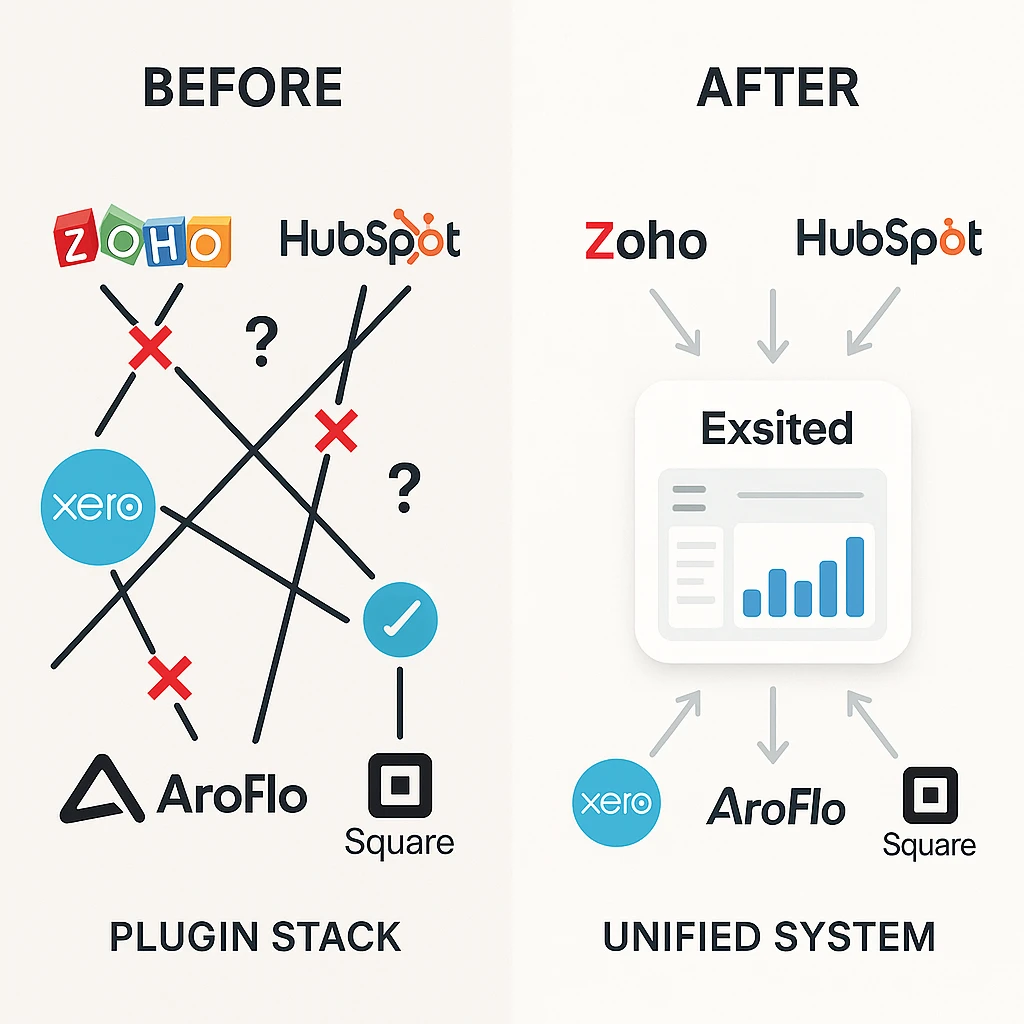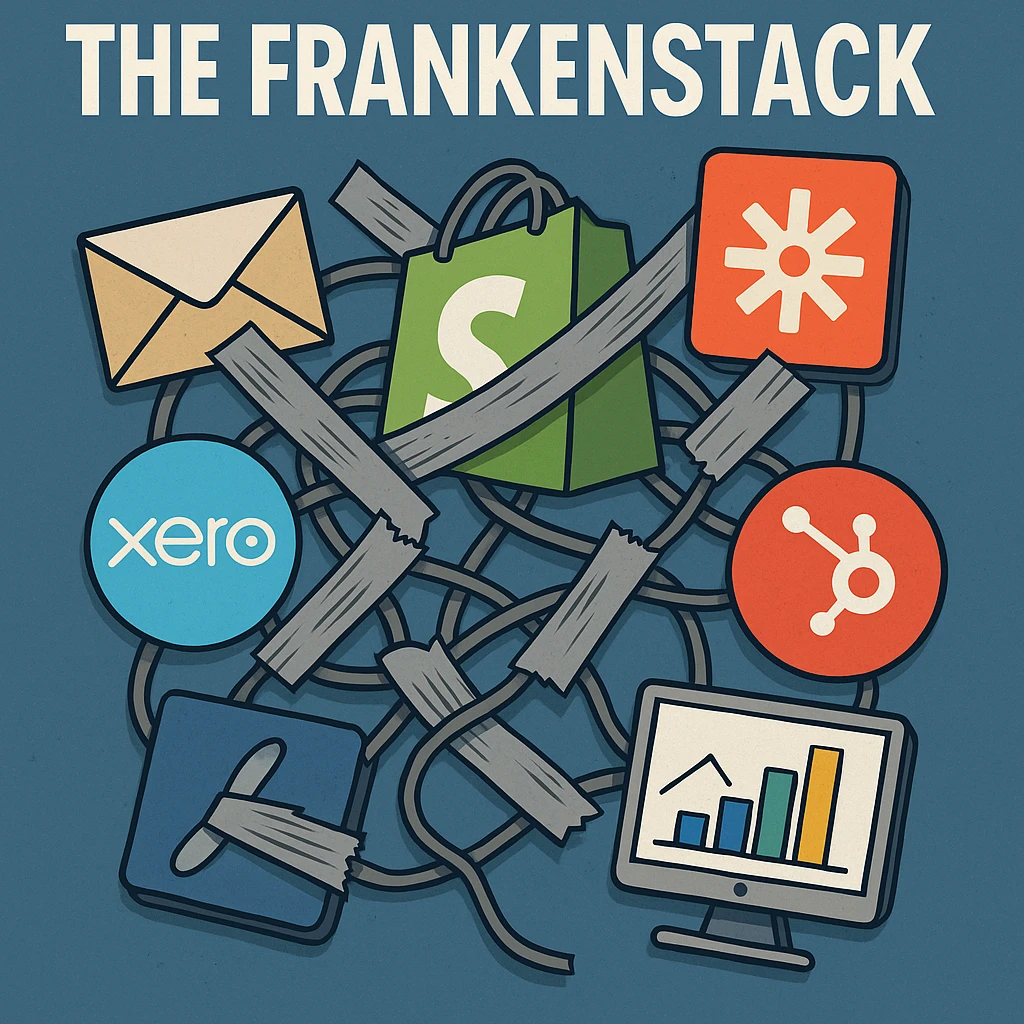When Plugins Fail: 5 Signs You’ve Outgrown Your Tech Stack
If you're spending more time managing tools than running your business, it's a sign you’re outgrowing your plugin stack—a common risk as companies scale.
At first, plugins feel like magic.
Your Shopify store talks to Xero. Your CRM nudges your email platform. Your job system triggers an invoice.
As operations grow more complex, what once felt seamless starts to fragment. That’s when plugin fatigue sets in—and your stack starts holding you back.
As someone who has scaled a retail business and now works on ERP strategy and integrations, I’ve seen this pattern play out in dozens of growing companies.
5 signs you’ve outgrown your plugin stack
1. You’re spending more time fixing than selling
Manual reconciliations, re-keying data across CRMs, job systems, and finance tools. If your “automations” need daily check-ins, they’re not saving time. They’re costing you growth
2. Your workarounds are breaking down
That clever Zapier chain or one-way sync worked fine until someone added a second warehouse, or changed how a field gets used. One tweak, and everything unravels.
3. Reporting is a mess
If your CRM, job system, and Xero each tell a different story, decision-making becomes guesswork. Data integrity shouldn't be a gamble.
4. New channels feel risky or break things
Adding Amazon? Upgrading your POS? Plugin-heavy stacks often collapse under the weight of new integrations. Teams end up afraid to scale.
5. Your customer experience is suffering
Delayed stock updates, failed fulfilment syncs, and misaligned notifications create chaos behind the scenes—and it shows at the front end.
If this sounds familiar, you're not alone. Here's what the shift from plugin sprawl to unified systems actually looks like.

Why this happens
Most SaaS tools are built to solve one job well. Plugins are often bolt-ons—not scalable infrastructure. This kind of plugin-based architecture may work in early stages, but can’t support the demands of a scaling tech stack. As complexity increases, each plugin becomes a potential point of failure.
The reliance on plugins and fragmented tools isn’t just inconvenient, it can pose serious operational and financial risks. According to the Uptime Institute’s 2023 Annual Outage Analysis, more than two-thirds of IT outages now cost over $100,000 USD (approximately $150,000 AUD), with a growing number exceeding $1 million. Meanwhile, Productiv’s 2023 State of SaaS report reveals that companies now use over 130 SaaS applications on average. As this sprawl grows, so does the risk of duplicated workflows, disconnected data, and integration breakdowns - classic symptoms of an overextended plugin stack.
Insight: Businesses outgrowing their plugin stack often face recurring integration breakdowns, especially when scaling across platforms or locations.
What to do instead
You don’t need a six-figure ERP implementation just to get your systems talking.
You need:
- Inventory that syncs across platforms in real time
- Integrations that adapt as your business scales
- Workflows built around how your team actually operates
That’s why many growing teams are rethinking their architecture, moving away from brittle plugin chains and toward modular platforms that offer deeper control and real alignment with operations.
At Exsited, we’ve built a solution around exactly these principles:
- Native integrations with Shopify, HubSpot, Xero, MYOB, AroFlo, and more
- Inventory and fulfilment control across every warehouse and channel
- Custom portals and approval workflows for compliance-heavy industries
- Centralised dashboards that reflect your actual operations
- No ERP bloat, just the tools you need, built to scale with you
Ready to ditch plugin pain?
If your current stack is holding you back, it’s not just a tech issue, it’s a growth risk.
Let’s fix it before it breaks something bigger.










